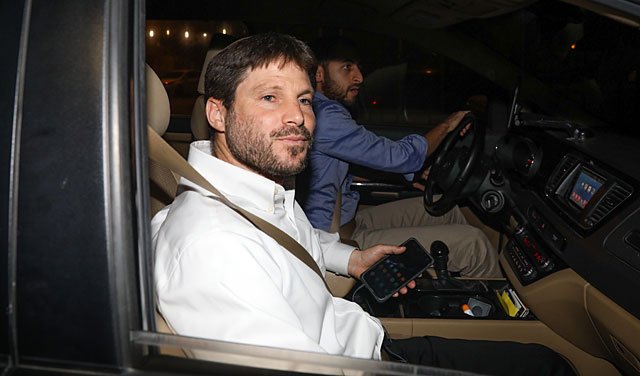Smotrich presents: Transportation revolution in Yesha

As part of the Yamina party's plans for the development of Judea and Samaria in the coming years, Transportation Minister Bezalel Smotrich has presented transportation and infrastructure goals to make the region more accessible and increase the scope of construction.
Arutz Sheva spoke to Minister Smotrich about his plans.
"You have to remember that over the past twenty years, Yesha (Judea and Samaria) has been severely discriminated against in comparison with other parts of the country. Anyone who has traveled around the country in the last few decade sees the extraordinary revolution on the roads, the interchanges and railroads. Sadly, this revolution has skipped over Judea and Samaria," Smotrich said.
"The Transportation Ministry said it was the job of the Defense Ministry, that Yesha was their responsibility. The Defense Ministry was dealing with the Iranian threat and did not have the time or money to address Judea and Samaria, Since the early 1990s and the paving of the Oslo bypass roads hardly any new roads have been paved.
"Here and there a little tar is put on the roads. At the same time, the population has thankfully been growing dramatically and the Arab population also uses the roads. The result is that traffic on the roads in Judea and Samaria is disproportionate to their capacity, and all passengers can feel it.
Minister Smotrich added that a professional examination of the data revealed that if current trends continue, in a few years it will be impossible to drive at speeds above 40 kilometers per hour (25 miles per hour) on Highway 60. "It is not normal and impossible to lead a normal life, especially when you want to develop the settlements and bring another half million Jews to Judea and Samaria. An advanced transportation network must be deployed."
The Transportation Minister then delved into the details of the plan, with a focus on upgrading Highways 60 and 90 "and of course the crossroads led by Route 5 and Route 55 planned from Kfar Saba to Kedumim area and its western part begins. We are already starting to do it. Soon we will get to work along all [of the planned upgrades]."
Smotrich said that Route 5 should be extended until Ephraim and the Jordan Valley. "It's not a thing that happens in one day. It takes a lot of money and takes a lot of time, but it has to get into the Transportation Ministry's regular work plans. Until now [the ministry] has worked with five-year plans, but Judea and Samaria were not part of those plans, so work did not get done there."
"The previous five-year plan at the Ministry of Transport was about NIS 200 billion for five years and Judea and Samaria were not there at all. When we, as a party, worried about a few hundred million shekels on the roads, Stav and Shapir came and cynically said that we were taking money from the hungry in Sderot. It is a nasty method of trying to pit one population in conflict with another.
"I do not want favors and do not want charity and no special money. There is a budget for transportation in the State of Israel and Judea and Samaria are part of the State of Israel. The Transportation Ministry is leading a master plan by the body called 'Transportation Master Team,' which studies Judea and Samaria and is preparing a strategic master plan for the region. This was presented even before the first round of elections. The plan includes NIS 200 million for promotion, iplanning, infrastructure shifting, appropriations, things needed to make the roads available and to prepare for the next five-year plan.
He described his plans to build a railway in the Gush Dan area. "The light rail in Gush Dan is already underway. There is going to be a railway network like London and other places in the world, and we want to connect this train."
Smotrich envisioned s future in which bright and wide main roads in Judea and Samaria connect to the rail network, "It's a big revolution and it's time for it to happen. It's late, after many years of neglect and deprivation, but better late than never."
